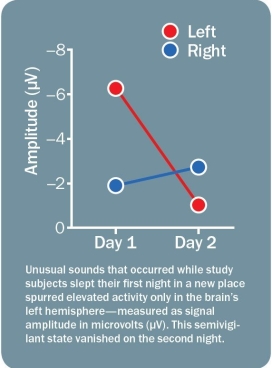Mental compartmentalization, is a powerful defense mechanism used to avoid discomfort caused by having conflicting values and emotions. I see the success of compartmentalization as resulting from its using the brain’s highly developed episodic memory capacity to apply spacial organization to creating distinct mental repositories for emotions, in the same way that people use the ancient mnemonic technique called method-of-loci or the “memory palace” system for organizing memories.

A French fMRI study published in 2010 indicated preliminary support for the hypothesis that the brain can pursue at most two goals simultaneously, one for each frontal lobe. Other studies of human multitasking indicate that, while the brain can become adept at processing and responding to certain information, it cannot truly multitask. By isolating and switching between “compartments”, rather than trying to tackle multiple problems at the same time, compartmentalization allows us to switch between multiple distinct tasks or ideas without having them interfere with one another. In essence compartmentalization is how we multitask, not in the sense that it enables us to actually do many different things at the same time, but in the sense that it makes switching between tasks feel seamless.
 That compartmentalization is a biologically successful survival and coping mechanism is demonstrated by the unihemispheric slow-wave sleep of many animals such as dolphins and chickens who have adapted a functional compartmentalization that enables them to turn off half of their brains (and one eye) so that they both sleep and remain alert at the same time. While most use it to remain alert to predators, swifts use it to sleep on the wing.
That compartmentalization is a biologically successful survival and coping mechanism is demonstrated by the unihemispheric slow-wave sleep of many animals such as dolphins and chickens who have adapted a functional compartmentalization that enables them to turn off half of their brains (and one eye) so that they both sleep and remain alert at the same time. While most use it to remain alert to predators, swifts use it to sleep on the wing.
If the capabilities of unihemispheric slow-wave sleep gives an evolutionary advantage to some of the largest brained animals like dolphins, and whales, then why did humans not need to evolve to have it?
The answer is, I think we did.
Is Self-Awareness Compartmentalization?
Strange as it may sound at first, I think the cognitive compartmentalization we experience in our self-awareness is a comparable evolutionary adaptation. Like the flying swift, who is able to be half asleep and half awake, self awareness allows me to both act, and observe myself doing so at the same time. At its core, self-awareness is a form of multitasking, the ability to simultaneously be first person singular (subject) while seeing myself as a third person (object).
Even when my attention is focused on writing this, my self awareness allows another part of my attention to keep track of my surroundings, to watch over me, like the waking eye of a half sleeping dolphin keeping watch.
Some people describe this as homo sapiens ability to look inward. I hope it is clear that by “inward” what is meant is that I am looking at my own thoughts, feelings and perceptions, while I am having them, this is what I mean by referring to self awareness as multitasking. I have compartmentalized myself so that I can look at, and think about my own life while living it, and think about my own thoughts while thinking them.
While being one person I can compartmentalize myself into my doing and my being, so that I can both do and be at the same time. Even the concept of self awareness encapsulates this by having two parts, the awareness part and the self. When I look inside myself, I am split in two, the inside self and the outside self. Both of these selves are me, and both share one identity, and introspection allows me to compartmentalize the two major vantage points of my own experience – one as the direct participator and the other, as the indirect supervisor.
Maybe if humans had instead adapted a similar unihemispheric ability to whales we would not have needed our heightened sense of self-awareness as a tool for survival?
The article titled “Why We Toss and Turn in an Unfamiliar Bed” provides evidence that humans also demonstrate asymmetric pattern of slow-wave activity (SWA), but only during the first night we sleep in an unfamiliar environment. Study participants showed increased vigilance in part of the left hemisphere, which was not sleeping as deeply as the right one. This study also showed that it took participants less time to awaken from noise stimulation to the left than the right brain, so, maybe we were not far from developing that ability too, when we evolved our high degree self consciousness, and with it our inbuilt sense of vigilance, that allows us to live as both actor and audience in the drama of our existence.

